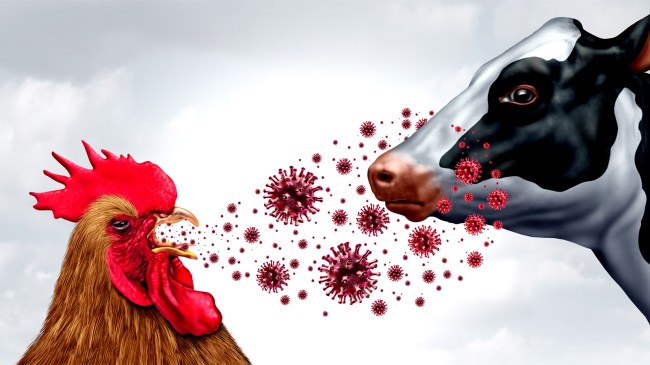iStockphoto
Yet another new strain of bird flu was confirmed by the U.S. Department of Agriculture (USDA) last week in milk samples collected from dairy cows in Nevada. It is the first detection of this particular virus genotype in dairy cattle in the United States.
“On January 31, 2025, the USDA Animal and Plant Health Inspection Service (APHIS) National Veterinary Services Laboratories (NVSL) confirmed by whole genome sequence the first detection of highly pathogenic avian influenza (HPAI) H5N1 clade 2.3.4.4b, genotype D1.1 in dairy cattle,” the USDA Animal and Plant Health Inspection Service wrote in a news release. “This confirmation was a result of State tracing and investigation, following an initial detection on silo testing under the USDA’s National Milk Testing Strategy (NMTS) in Nevada.”
38 states are currently enrolled in the USDA’s National Milk Testing Strategy and performing active surveillance for bird flu. Over the past 30 days, there have been 38 confirmed cases in cattle in two states: California and Nevada.
“The challenge with this virus is that it may be spread through contaminated clothing worn and equipment shared between animals, but birds carrying the disease can also infect domestic animals and livestock,” said Nevada Department of Agriculture Director J.J. Goicoechea, DVM. “We cannot stress enough how important it is to keep equipment clean, practice good animal health safety practices, and bolster biosecurity measures to prevent the spread of disease.”
Last week, a new strain of highly pathogenic bird flu (H5N9), which has never been seen in the United States before, was recently discovered on a duck farm in California. That discovery resulted in the culling of nearly 119,000 birds and an investigation by USDA officials with the Animal and Plant Health Inspection Service.
So far, there have been 67 confirmed human cases of bird flu in the United States, resulting in one death. In late December, 20 big cats at a sanctuary in Washington state died from bird flu. A Chilean flamingo and harbor seal at Lincoln Park Zoo in Chicago also died as a result of contracting bird flu. All were H5N1 infections.
In 2020, Dr. Michael Gregor wrote a book in which he warned that bird flu hitting the chicken farming industry could take out half of the world’s population. Then, in 2024, former director of the CDC, virologist Dr. Robert Redfield, warned that it is “not a question of if, it’s more a question of when we will have a bird flu pandemic.”
Despite all of that, the U.S. Centers for Disease Control and Prevention (CDC) continues to state that “the current public health risk is low.”

